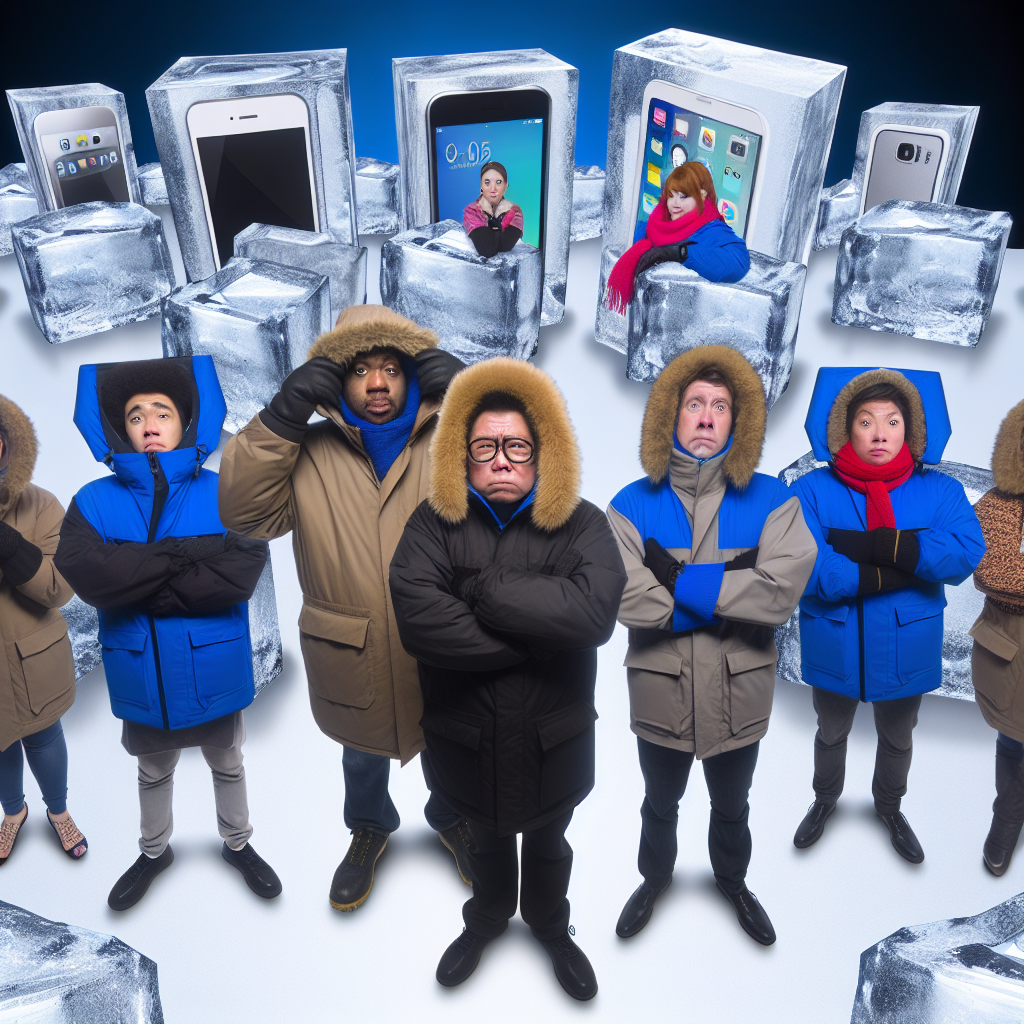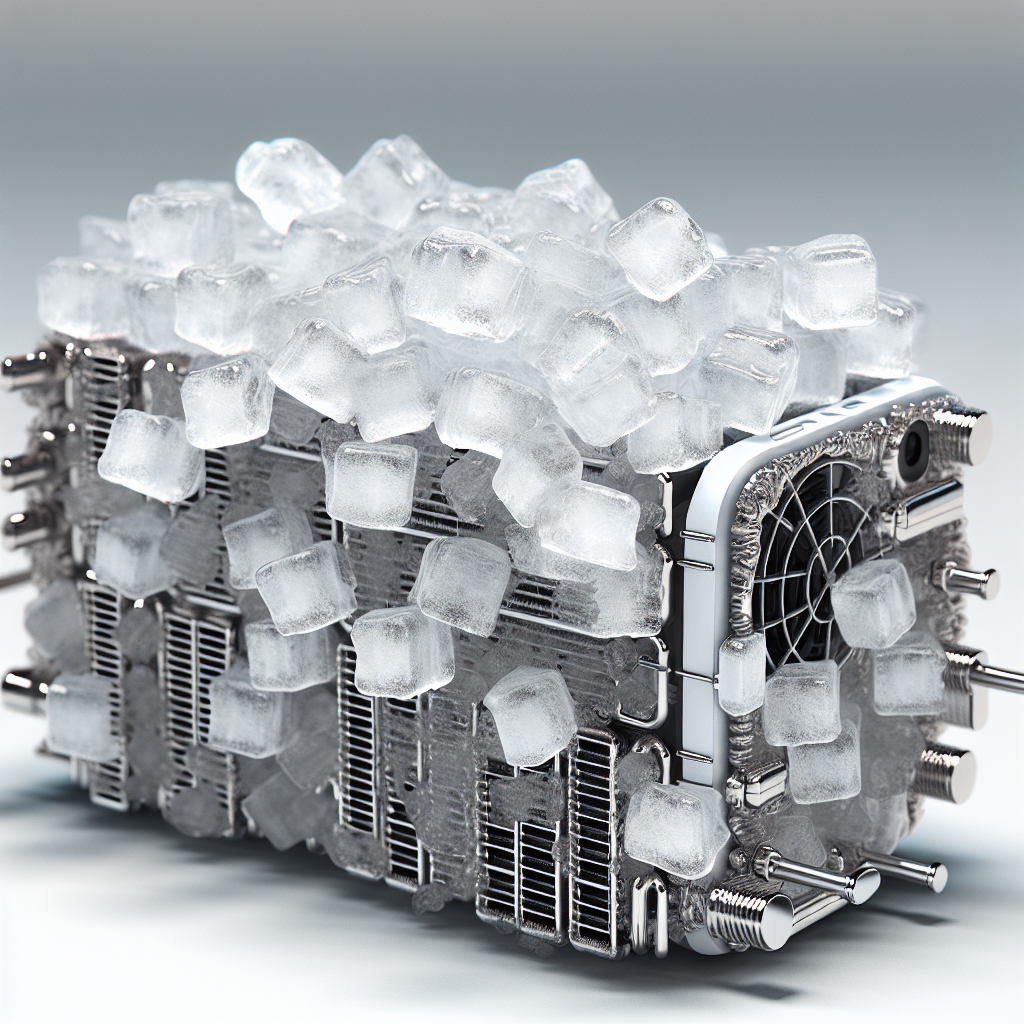The Impact of Phone Coolers on Battery Life
Phone cooler makers need to chill with all the ice. In recent years, the market for phone coolers has exploded, with numerous companies offering various cooling solutions for smartphones. These coolers are marketed as a way to prevent overheating and extend battery life. However, the impact of phone coolers on battery life is a topic that deserves closer examination.
Firstly, it is important to understand why phone coolers have become so popular. Smartphones have become an integral part of our lives, and we rely on them for a wide range of tasks. From browsing the internet to playing games, our phones are constantly working, which can lead to overheating. Overheating not only affects the performance of the device but also poses a risk to the battery life. Phone coolers promise to address this issue by dissipating heat and keeping the device cool.
However, the effectiveness of phone coolers in extending battery life is questionable. While it is true that excessive heat can negatively impact battery performance, phone coolers may not be the most effective solution. In fact, some experts argue that phone coolers can actually have a detrimental effect on battery life. This is because phone coolers often rely on ice or other cooling agents to lower the temperature of the device. While this may provide temporary relief, it can also cause the battery to work harder to maintain its optimal temperature.
Furthermore, phone coolers can also interfere with the natural cooling mechanisms of smartphones. Modern smartphones are designed with built-in cooling systems that regulate temperature and prevent overheating. By adding an external cooling device, users may disrupt this delicate balance and actually cause more harm than good. In some cases, phone coolers can even block the airflow around the device, leading to increased heat buildup and reduced battery life.
Another factor to consider is the impact of phone coolers on the overall user experience. While phone coolers may provide temporary relief from overheating, they can also add bulk and weight to the device. This can make it less comfortable to hold and use, especially for extended periods. Additionally, phone coolers often require additional power to operate, which can further drain the battery. This means that users may need to sacrifice battery life in order to keep their device cool.
In conclusion, the impact of phone coolers on battery life is a complex issue. While these devices may offer a temporary solution to overheating, they may not be the most effective or efficient way to extend battery life. Phone coolers that rely on ice or other cooling agents can actually cause the battery to work harder, potentially reducing its lifespan. Additionally, phone coolers can interfere with the natural cooling mechanisms of smartphones and add bulk and weight to the device. As technology continues to advance, it is important for consumers to carefully consider the potential drawbacks of phone coolers before investing in them. Ultimately, finding a balance between performance and battery life is key to ensuring a positive user experience with our smartphones.
The Pros and Cons of Different Phone Cooling Technologies

Phone cooler makers need to chill with all the ice. With the increasing demand for high-performance smartphones, the issue of overheating has become a major concern for both manufacturers and users. To address this problem, phone cooler makers have introduced various cooling technologies. In this article, we will explore the pros and cons of different phone cooling technologies, helping you make an informed decision when it comes to keeping your phone cool.
One of the most common cooling technologies used in smartphones is the use of heat pipes. Heat pipes are essentially hollow tubes filled with a liquid that has a low boiling point. When the phone heats up, the liquid inside the heat pipe evaporates, absorbing the heat and carrying it away from the phone’s components. This technology is highly effective in dissipating heat and preventing overheating. However, it does have its drawbacks. Heat pipes can be bulky and take up valuable space inside the phone, limiting the design options for manufacturers. Additionally, they can be expensive to implement, which may result in higher costs for consumers.
Another cooling technology that has gained popularity in recent years is the use of graphite sheets. Graphite is an excellent conductor of heat, allowing it to quickly absorb and dissipate heat from the phone’s components. Graphite sheets are thin and flexible, making them easy to integrate into the phone’s design. They are also relatively inexpensive compared to other cooling technologies. However, graphite sheets have their limitations. They are not as effective as heat pipes in dissipating heat, especially in high-performance smartphones that generate a significant amount of heat. Additionally, graphite sheets may not provide uniform cooling across all areas of the phone, leading to potential hotspots.
A more recent development in phone cooling technology is the use of vapor chamber cooling. Vapor chamber cooling works on a similar principle to heat pipes but offers improved performance. Instead of a hollow tube, vapor chambers consist of a flat plate filled with a liquid that vaporizes when heated. The vapor spreads across the plate, absorbing heat and then condensing back into a liquid, which is then returned to the heat source. Vapor chambers provide better heat dissipation and can cover larger areas of the phone, resulting in more efficient cooling. However, like heat pipes, vapor chambers can be bulky and expensive to implement.
One cooling technology that has gained attention in recent years is the use of liquid cooling systems. Liquid cooling systems use a liquid coolant, such as water or a specialized fluid, to absorb and dissipate heat from the phone’s components. These systems typically consist of a heat sink, a pump, and a radiator. Liquid cooling systems offer excellent heat dissipation capabilities and can effectively cool high-performance smartphones. However, they are more complex and expensive to implement compared to other cooling technologies. They also require regular maintenance to ensure optimal performance.
In conclusion, phone cooler makers have introduced various cooling technologies to address the issue of overheating in smartphones. Each technology has its pros and cons, and the choice ultimately depends on the specific needs and preferences of the user. Heat pipes, graphite sheets, vapor chambers, and liquid cooling systems all offer different levels of cooling performance, cost, and design considerations. As smartphone technology continues to advance, it is likely that we will see further innovations in phone cooling technologies, providing even better solutions to keep our devices cool.
Exploring Alternative Cooling Methods for Smartphones
Phone cooler makers need to chill with all the ice. As smartphones become more powerful and capable of handling demanding tasks, they also generate more heat. This heat can cause performance issues and even damage the internal components of the device. To combat this problem, many phone cooler makers have turned to using ice as a cooling method. While ice may seem like a simple and effective solution, it is not without its drawbacks. In this article, we will explore alternative cooling methods for smartphones that can provide effective cooling without the need for ice.
One alternative cooling method that has gained popularity in recent years is the use of heat pipes. Heat pipes are sealed copper tubes filled with a small amount of liquid. When the smartphone heats up, the liquid inside the heat pipe evaporates and moves to the cooler end of the pipe. This process transfers heat away from the device, keeping it cool. Heat pipes are highly efficient and can provide effective cooling without the need for ice. Additionally, they are compact and can be easily integrated into the design of smartphones.
Another alternative cooling method is the use of graphite sheets. Graphite is an excellent conductor of heat and can quickly dissipate the heat generated by smartphones. Graphite sheets are thin and flexible, making them easy to incorporate into the design of smartphones. By placing graphite sheets in strategic locations inside the device, manufacturers can effectively cool the internal components without the need for ice or other bulky cooling solutions.
Phase change materials (PCMs) are also being explored as a cooling method for smartphones. PCMs are substances that can absorb and release large amounts of heat during phase transitions, such as melting and solidifying. By incorporating PCMs into the design of smartphones, manufacturers can create devices that can absorb and dissipate heat effectively. PCMs have the advantage of being lightweight and compact, making them ideal for use in smartphones. However, further research is needed to optimize the use of PCMs in smartphone cooling systems.
Liquid cooling is another alternative cooling method that is gaining traction in the smartphone industry. Liquid cooling involves circulating a coolant, such as water or a specialized liquid, through a system of pipes and channels inside the device. The coolant absorbs the heat generated by the smartphone and carries it away, keeping the device cool. Liquid cooling systems can be highly efficient and provide effective cooling even under heavy usage. However, they can be more complex to implement and may require additional space inside the device.
In conclusion, while ice may be a popular cooling method for smartphones, there are alternative methods that can provide effective cooling without the need for ice. Heat pipes, graphite sheets, phase change materials, and liquid cooling systems are all viable options for smartphone cooling. These alternative methods offer advantages such as compactness, efficiency, and lightweight design. As smartphones continue to evolve and become more powerful, it is crucial for phone cooler makers to explore and adopt these alternative cooling methods to ensure optimal performance and longevity of the devices.


